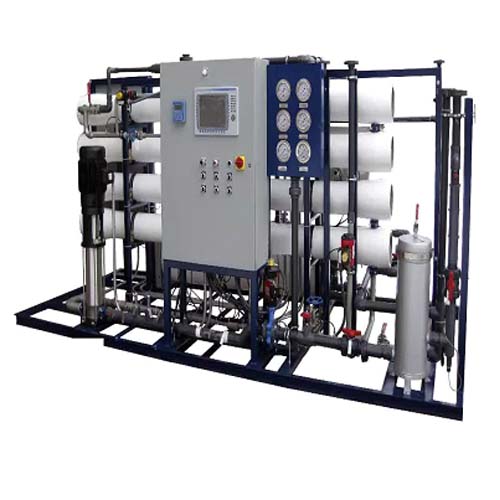NANOFILTRATION SYSTEMS
Nanofiltration Systems
There are applications where a 75% rate of salt rejection is preferable to 95 to 99%, especially when it is achieved using only half of the energy. Unlike with RO membrane elements, the NF offerings of the major membrane manufacturers are quite different in performance from company to company. With RO membrane elements, any model with less than 99.5% sodium chloride rejection, especially with seawater membranes, is considered inferior. In the case of NF, there is a “place” for any membrane with a NaCl rejection rate of 40%, or more. Nano filtration has also been called a “softening” membrane as while its salt rejection may be 80% or less, hardness rejection will often remain well over 90%.
Nano filtration System

Daily capacity range : 2to 135 M3/hr
Membrane diameter : 4” or 8”
Microprocessor/PLC control penal
Pump : SS-316
Structure : SS/MS
Display : All Running Parameter, All Fault and Online TDS Show
Aquatech Plus has over 15+ years of experience as a global supplier of industrial and commercial Nano filtration systems for the removal of unwanted impurities from water. Our NF systems ensure the production of clean and potable water for any type of application in the water treatment industry. Check out our selection of Nano filtration systems for commercial establishments and industrial plants to meet your water treatment needs.
What is nanofiltration membrane?
Nanofiltration membranes are utilized for the filtration of water with low total dissolved solids (TDS) for the purposes of eradicating organic substances and softening water. Nanofiltration is usable in many water and wastewater treatment industries for the practical removal of ions and organic material. It has also been adopted as pretreatment to RO. Other than water purification, nanofiltration membranes are also used in the manufacturing production of food & beverages, and pharmaceuticals.
Difference between nanofiltration and reverse osmosis?
While nanofiltration and reverse osmosis systems have similar designs and operation uses, there are some notable differences between the two. The primary distinction is that nanofiltration is not as rigid as reverse osmosis. It functions with less feed water pressure and is incapable of removing single charge ions from the water as definitely as reverse osmosis membranes.
While up to 99% of chlorides and sodium are removed by reverse osmosis systems, nanofiltration membranes typically remove only 50% to 80%. This percentage relies on the type of material and manufacturing of the membrane. However, due to its effectiveness in removing multiple charge ions, nanofiltration is the preferred choice for removing hardness from water while not affecting the total dissolved solids content than would reverse osmosis.
Examples of Nanofiltration NF Applications:
| Application | Permeate | Concentrate | Benefits of NF |
|---|---|---|---|
| Whey / Whey Permeate | Salty wastewater | Desalted whey concentrate | Allows the recovery of lactose and whey protein concentrate with reduced salt content |
| Textile | Dyes | Water, salts, BOD, COD and color | NF is used to desalt dyes resulting in a higher value product |
| Recycle of acid solutions | Acid solution | BOD, COD, calcium, suspended solids, acidic water | Allows acid solution to be recycled resulting in reduced cleaning chemical costs |
| Water | Softened water | Hard water | Potable water production. Softened water reduces scaling on equipment and heat exchange surfaces |
| Laughing Bacchus Winecellars | Yoshi Tannamuri | Canada | Mexico |
| Antibiotics | Salty waste product | Desalted, concentrated Antibiotics | NF produces high value pharmaceutical products |
